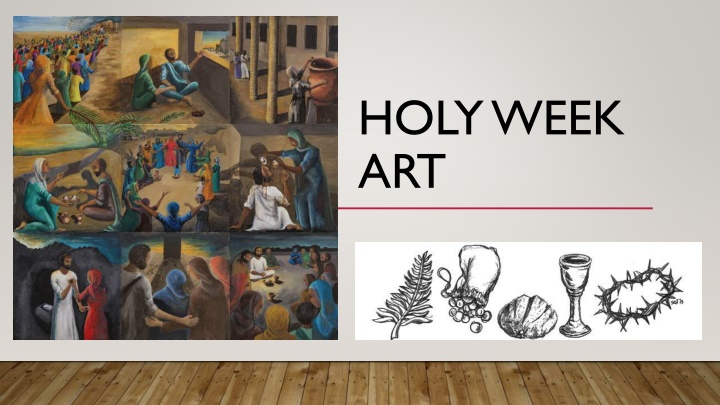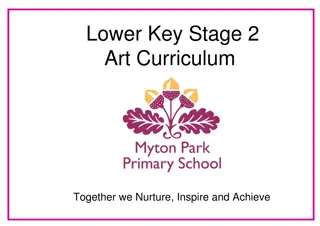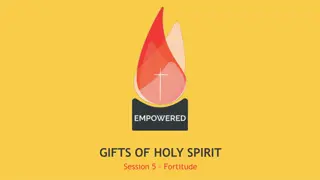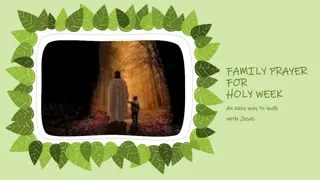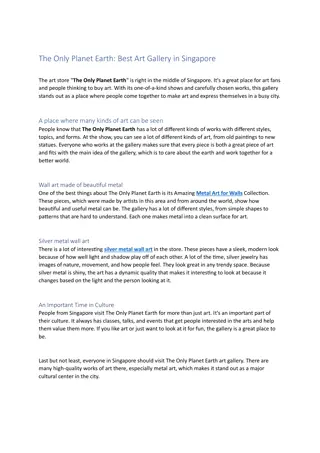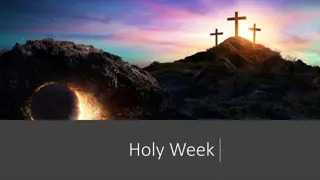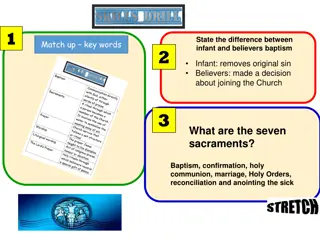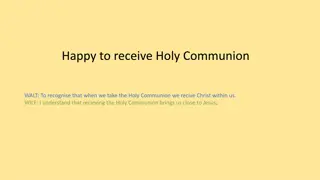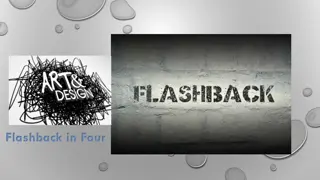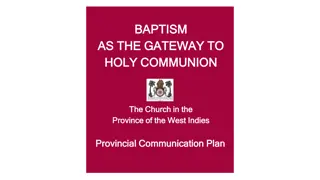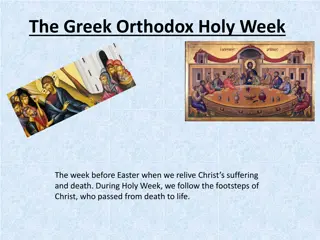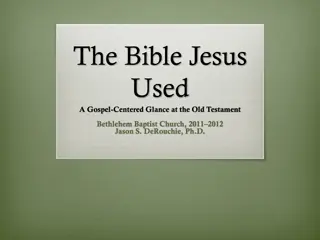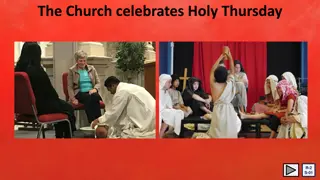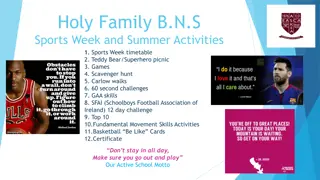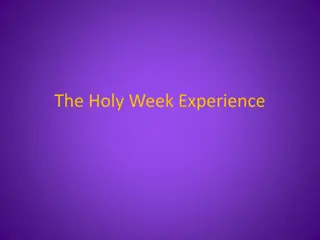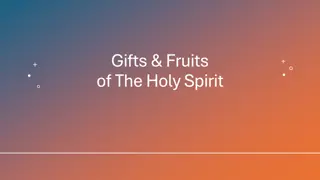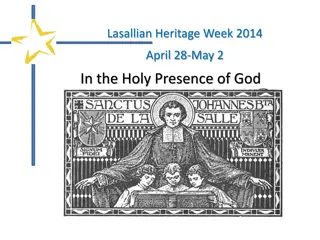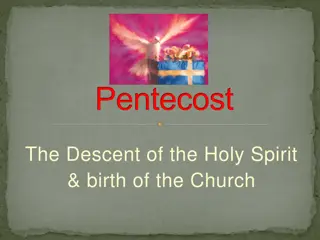Holy Week Art
Explore significant events of Holy Week through art, from Palm Sunday to Maundy Thursday and Good Friday. Dive into various paintings depicting Jesus entering Jerusalem, cleansing the temple, Judas' betrayal, and the Last Supper, each carrying deep symbolism and emotional depth. Discover the artistic interpretations and theological messages conveyed in these timeless masterpieces.
Download Presentation

Please find below an Image/Link to download the presentation.
The content on the website is provided AS IS for your information and personal use only. It may not be sold, licensed, or shared on other websites without obtaining consent from the author.If you encounter any issues during the download, it is possible that the publisher has removed the file from their server.
You are allowed to download the files provided on this website for personal or commercial use, subject to the condition that they are used lawfully. All files are the property of their respective owners.
The content on the website is provided AS IS for your information and personal use only. It may not be sold, licensed, or shared on other websites without obtaining consent from the author.
E N D
Presentation Transcript
HOLY WEEK ART
Sunday Monday Tuesday Wednesday Thursday Friday Saturday Sunday Palm Sunday Spy Wednesday Maundy Thursday Good Friday The Resurrection Jesus enters Jerusalem to cheering crowds Jesus goes to the temple and is unhappy to see people selling goods Judas is given money to betray Jesus The Passover meal Jesus has his last supper with his apostles Jesus is crucified Jesus rises from the dead
PALM SUNDAY JESUS ENTERS JERUSALEM
The Entrance of Christ into Jerusalem (1844) Jean-Hippolyte Flandrin What can you see? Read Mark 11:7-10
A Palm Sunday Painting (2011) Kai Althoff What do you see in this painting? What is the same? What is different?
MONDAY JESUS CLEANSES THE TEMPLE
Read John 2:13-25 What do you notice about Jesus in all three paintings? Why do you think the artist has chosen to show Jesus like this?
SPY WEDNESDAY JUDAS IS GIVEN MONEY TO BETRAY JESUS
Read Mark 14:10-11 What is happening in this painting? Did you know? In the Czech Republic the day is traditionally called Ugly Wednesday, Soot-Sweeping Wednesday or Black Wednesday, because chimneys used to be swept on this day, to be clean for Easter. In Malta this day is known as L-Erbg a tat-Tniebri (Wednesday of Shadows) referring to the liturgical darkness (tenebrae). In the past children went to the parish church and drummed on the chairs to make the sound of thunderstorms In Scandinavia this day is known as Dymmelonsdagen. A dymbil is a piece of wood. Historically, the metal clapper of the church bells were replaced by these dymbils on Holy Wednesday, to make a duller sound. These days this tradition is also copied on Ash Wednesday,
MAUNDY THURSDAY JESUS SHARES HIS LAST SUPPER WITH HIS FRIENDS JESUS WASHES THE FEET OF THE APOSTLES JESUS IS ARRESTED
Read Matthew 26:17-20 or Luke 22:19-20 Last Supper Sieger Koder What 3 things do you notice in this painting?
Think of 3 words to describe the feelings of the disciples in this painting Imagine you are able to look into the room where Jesus and his friends are celebrating the Passover meal. Draw what you would see? What might you hear and smell?
Read Matthew 26: 39 The Agony in the Garden Giovanni Bellini Explain what is happening where I have placed the stars in this painting
GOOD FRIDAY JESUS DIES
Read Luke 23:44-46 Why do you think the artist has chosen to paint this picture from this unual angle?
EASTER SUNDAY THE RESURRECTION OF JESUS
Resurrection Josef Zacek Write a prayer that shows your gratitude for Jesus sacrifice and your awe of the resurrection
